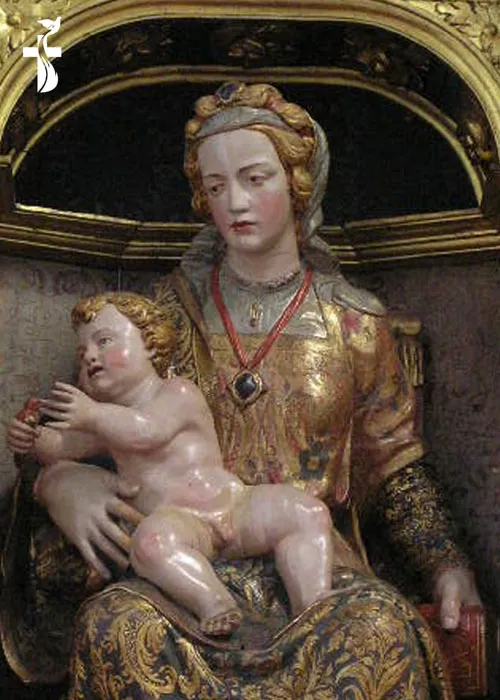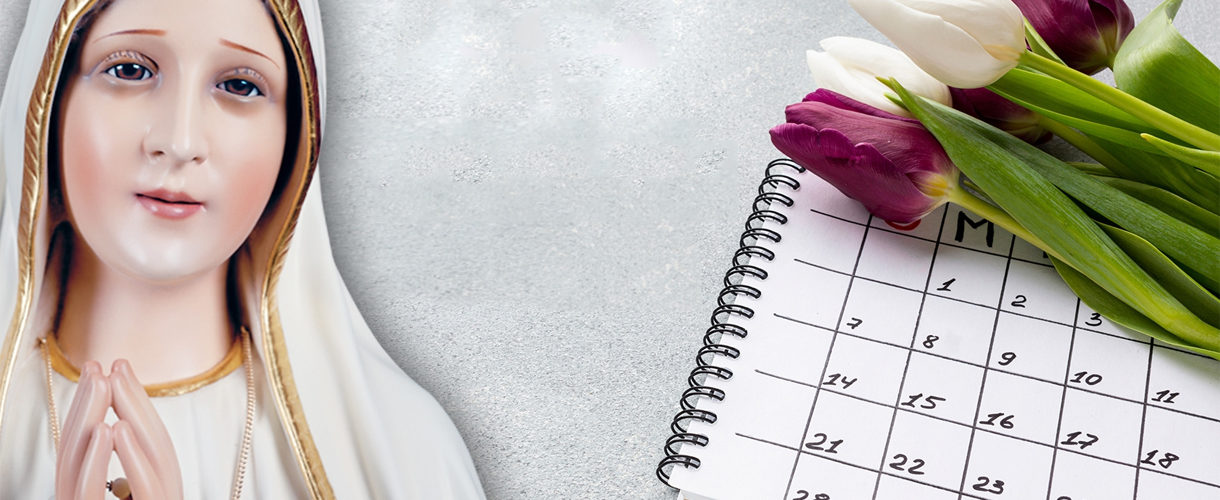
Our Lady Of Oviedo
Country : Spain
Year :
The Blessed Virgin is venerated under this title at Covadonga, a small village in the Cantabrian Mountains of Asturia, Spain. The stories of this nationally famous Madonna go back many centuries.
In 711, the Moors crossed over from Northern Africa and landed near the site of modern Gibraltar; moving inland they were hired by the armies of the Visigoths, led by King Rodrigo. In the Battle of Guadalete the Visigoths were severely beaten; Rodrigo having failed, a relative, Don Pelayo, regrouped the scattered surviving Goths and slowly retreated into the hills and mountains of Asturia, taking shelter near Oviedo.
One of the soldiers fleeing from punishment, which he rightly deserved for his conduct, took refuge in a cave on Mt. Auseba; as he was being pursued, a venerable hermit stepped from the cave and said to the pursuer, “This cave is the dwelling place of the Most Holy Mother of God”, and the fugitive placed himself under her protection; “If you will pardon him, you, too, will one day find here a haven, you will rebuild the empire and your name will live in glory.” Pelayo pardoned the man and knelt before the image of Mary, praying to her and proclaiming the Virgin the Patroness of his army and of all Spain.
In 718 the Moors dispatched a powerful army under the command of General Alcamah, with orders to wipe out Pelayo and his troops. When this news reached Pelayo, he immediately took refuge in the cave and prayed to the Virgin, asking her to aid his outnumbered men. Alcamah arrived and ranged his archers in the valley below the rocky cliffs. He ordered them to hurl their arrows against the defenders hidden among the crags above. Arrows soon filled the air, but strangely enough all fell short of Pelayo’s men. Many rebounded from the hard rocks, killing those who had shot them. Pelayo’s men hurled huge rocks and trunks of trees down onto the Moors. A section of the mountain broke loose, slid down and crushed great numbers of the enemy. This disorganized the Moors and finally they fled in utter confusion, racing for the plains of Auseba. Then a terrific cloudburst broke over the mountain, causing the Deva River to overflow, and many perished in its raging waters.
This unexpected defeat of the Moors was actually the beginning of the eight-century-long reconquest of Spain. Don Pelayo attributed the astonishing victory of his vastly outnumbered troops to the powerful aid of the Virgin of Oviedo.
Sometime around the middle of the eighth century Alfonse I (739-757) erected the first little chapel at this cave and also a Benedictine Monastery of Holy Mary. Later a collegiate church was built nearby. It was destroyed by fire October 17, 1777, but was later rebuilt. The present basilica—higher on the mountainside than the cave itself—is a work of the nineteenth century, initiated by the Bishop of Oviedo, according to plans by Aparicio. It is known as the Basilica de la Virgen de Los Ballallas (Virgin of the Battles).
In the cave itself, there is today the little chapel of Santa Maria and the image of Our Lady of Covadonga or Oviedo. The present statue was carved in 1908 by J. Samso Lengli and was solemnly crowned in 1918.



